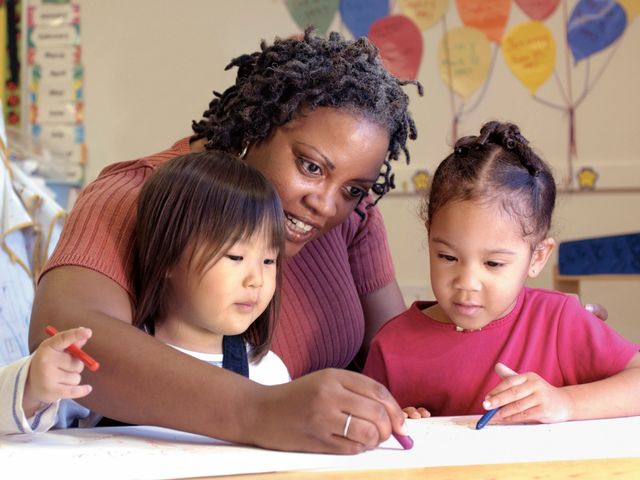Preparing Your Child for the Future Through Our STEAM Programs
Our STEAM program is designed to incorporate STEAM into everyday activities.
We have all heard of the acronym STEM. STEM = Science, Technology, Engineering, and Mathematics.

STEM learning was a program created by scientific administrators at the National Science Foundation as a way to align the curriculum in the classroom with career fields in science, technology, engineering, and math. It was considered a way to create an interest in the fields and begin preparation for a learning path from preschool and beyond.
STEAM = Science, Technology, Engineering, and Art based on Mathematics. STEAM was created by the Rhode Island School of Design as a way to bring Art into those fields of learning, which encourages creativity and makes learning fun.
STEAM is active learning, and the “A” in STEAM Education is just as important as every other letter.
We will focus on bringing STEAM into day-to-day learning in many ways. Our newly designed playground will also incorporate STEAM materials and activities that foster learning through free play.



Science
Children are natural scientists. They like to figure out how things work. Our Pre-K student’s scientific curiosity is fostered in our classrooms through observation and experimentation.
Students will be given opportunities to engage in hands-on scientific exploration and predict the outcomes of experiments. To help children explore science concepts, teachers will encourage children to sort objects based on different attributes and explain their reasoning.
Teachers will plan scientific experiments such as:

Science
Children are natural scientists. They like to figure out how things work. Our Pre-K student’s scientific curiosity is fostered in our classrooms through observation and experimentation.
Students will be given opportunities to engage in hands-on scientific exploration and predict the outcomes of experiments. To help children explore science concepts, teachers will encourage children to sort objects based on different attributes and explain their reasoning.
Teachers will plan scientific experiments such as:
Technology
Technology comes in many forms. Most Pre-K students understand what cell phones, tablets, and computers are, but technology can also mean many other things.
Teachers will introduce technology in multiple ways, including simple tools like pulleys, wheels, levers, scissors, and ramps. Technology can support cognitive development as children play with tools and observe and learn how they work.
Our program will use computers and tablets, but it will also focus on the simple everyday tools that children encounter every day.


Art
Art encourages innovation. Active and self-guided discovery through art can allow young children the opportunity to learn through expression. Students will engage in painting, dramatic play, music, and drawing.
Art is a sensory exploration that promotes the desire to learn about tools and materials used to create. Drawing and dramatic play also allow children to express how they feel and what they know, even before they learn to read or write. Art is also associated with math and can aid in pattern recognition and sequencing.
To encourage the exploration of art, teachers will:

Art
Art encourages innovation. Active and self-guided discovery through art can allow young children the opportunity to learn through expression. Students will engage in painting, dramatic play, music, and drawing.
Art is a sensory exploration that promotes the desire to learn about tools and materials used to create. Drawing and dramatic play also allow children to express how they feel and what they know, even before they learn to read or write
Art is also associated with math and can aid in pattern recognition and sequencing.
To encourage the exploration of art, teachers will:
Math
Math is integrated into all our learning experiences in Pre-K. Children use math to solve problems, create plans and interpret the world around them. Math includes numbers, operation, measuring, use of patterns and pattern recognition, and space and time.
Students can learn concepts like geometry and spatial relationship through object exploration. Teachers will reinforce math concepts by intentionally using math language throughout the day.
To encourage the exploration of math concepts, teachers will:

Math
Math is integrated into all our learning experiences in Pre-K. Children use math to solve problems, create plans and interpret the world around them. Math includes numbers, operation, measuring, use of patterns and pattern recognition, and space and time.
Students can learn concepts like geometry and spatial relationship through object exploration. Teachers will reinforce math concepts by intentionally using math language throughout the day.
To encourage the exploration of math concepts, teachers will:

